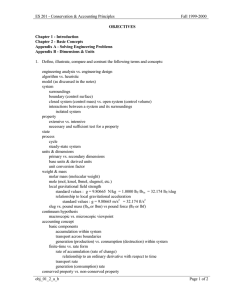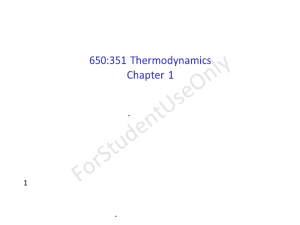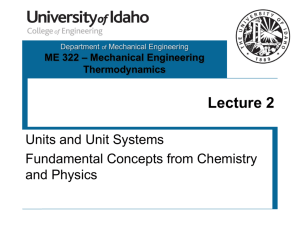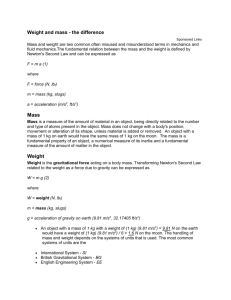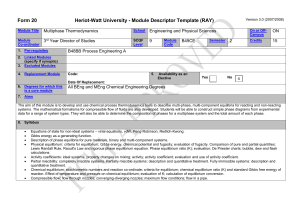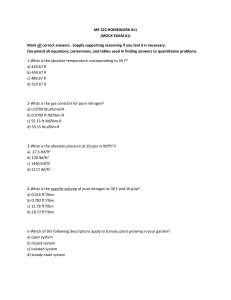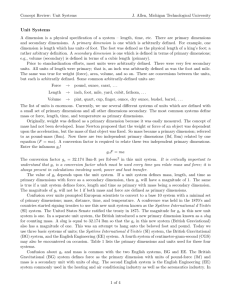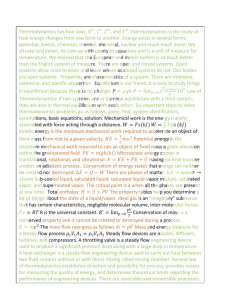Turbomachinery
advertisement
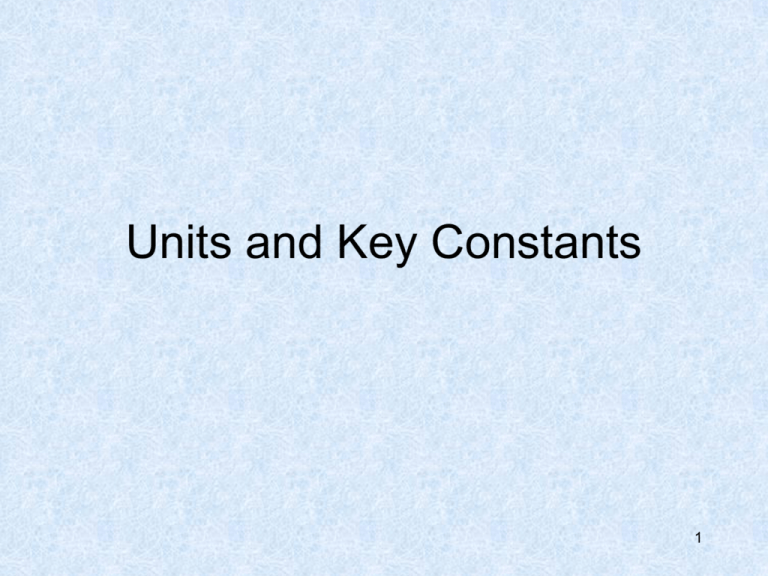
Units and Key Constants 1 • Conventional Units Parameter English Units SI Units – – – – Feet, Inches Seconds Pounds (force), lbf psf, psi Meters, M Seconds, s 4.448 Newton, N Pascal, Pa (1N/1m2) bar (105Pa) 2.989 kPa 0.4536 kilogram Joule, J 0.7457 kWatt Distance Time Force Pressure – Mass – Energy – Power 1 ft H2O Pounds (mass), lbm Btu 1 Hp 2 Equivalent Systems of Units System English Eng. English Gravitational Metric Metric International System (SI) Force Mass lbf lbm lbf slug kgf kg dyne gm Newton kg Length ft ft m cm m time s s s s s 3 Important Constants for Air Variable pressure density Universal gas constant Spec. gas constant (air) Air Air Joule constant speed of sound Symbol p R=/M Cp Cv J a lbm unit lb/ft2 slug/ft3 4.97+4 ft-lb/slug-mole-R 1716 ft-lb/slug-R 7.73 5.5 778.16 ft-lbf/BTU 1100 ft/s lbf unit lb/ft2 lbm/ft3 1545.33 ft-lb/lbm-mole-R 53.35 ft-lb/lbm-R 0.24 0.172 kg u N/m N/m 831 J/kg-m 287 J/kg 1.00 0.71 1100 ft/s 440 m 4 Useful Equivalents Quantity Original Unit Flow Specific Energy Mass Rotational speed Kinematic viscosity Pressue 1.0 1.0 1.0 1.0 1.0 1.0 cfs [ft3/sec] ft2/s2 slug rad/s ft2/s in. H2O Equivalent 448. gal/min 1.0 ft-lbf/slug 32.174 lbm 9.549 rev/min 92,903 centistokes 5.2 lbf/ft2 5 • For Liquid Water : 62.4lbm / ft 3 • U.S. Standard Atmosphere - 1976 lbf pressure 14.696 2 101,325 Pa in temperature 518.67R 273 K o 6 Standard Atmosphere Altitude Stratosphere >65,000 ft 36,089 ft 59 F Temperature Altitude 36,089 ft 3.202 psia 14.696 psia Pressure 7 8 9 Thermodynamics Review 10 Thermodynamics Review • Thermodynamic views – microscopic: collection of particles in random motion. Equilibrium refers to maximum state of disorder – macroscopic: gas as a continuum. Equilibrium is evidenced by no gradients • 0th Law of Thermo [thermodynamic definition of temperature]: – When any two bodies are in thermal equilibrium with a third, they are also in thermal equilibrium with each other. – Correspondingly, when two bodies are in thermal equilibrium with one another they are said to be at the same temperature. 11 Thermodynamics Review • 1st Law of Thermo [Conservation of energy]: Total work is same in all adiabatic processes between any two equilibrium states having same kinetic and potential energy. – Introduces idea of stored or internal energy E – dE = dQ - dW • dW = Work done by system [+]=dWout= - pdV • Some books have dE=dQ+dW [where dW is work done ON system] • dQ = Heat added to system [+]=dQin – Heat and work are mutually convertible. Ratio of conversion is called mechanical equivalent of heat J = joule 12 Review of Thermodynamics • Stored energy E components – Internal energy (U), kinetic energy (mV2/2), potential energy, chemical energy • Energy definitions – Introduces e = internal energy = e(T, p) – e = e(T) de = Cv(T) dT thermally perfect – e = Cv T calorically perfect • 2nd law of Thermo – Introduces idea of entropy S – Production of s must be positive – Every natural system, if left undisturbed, will change spontaneously and approach a state of equilibrium or rest. The property associated with the capability of systems for change is called entropy. dS Qrev T TdS dE dW 13 Review of Thermodynamics • Extensive variables – depend on total mass of the system, e.g. M, E, S, V • Intensive variables – do not depend on total mass of the system, e.g. p, T, s, (1/v) • Equilibrium (state of maximum disorder) – bodies that are at the same temperature are called in thermal equilibrium. • Reversible – process from one state to another state during which the whole process is in equilibrium • Irreversible – all natural or spontaneous processes are irreversible, e.g. effects of viscosity, conduction, etc. 14 Thermodynamic Properties Derived Primitive Extensive Intensive Extensive Intensive Mass – M Density - Energy – Eo Specific energy – eo - Pressure – p Kinetic energy – Ek Sp. kin. energy – V2/2 - Temperature – T Potential energy – Ep Sp. pot. energy – gz Volume - V Specific volume - Internal energy - E Sp. int. energy - e E0 E Ek E p 0 T or V2 e0 e gz 2 Total or stagnation state 15 1st Law of Thermodynamics • For steady flow, defining: V2 /2 specific kinetic energy gz specific potential energy eu specific internal energy h =e+pv e+ p specific enthalpy V2 e0 e gz 2 total specific energy • We can write: V2 e0 pv e gz pv 2 • and h e pv and h0 e0 pv 16 1st Law of Thermodynamics • Substituting back into 1st law: E0 Q W m h V 2 / 2 gz m h V 2 / 2 gz out in – Height term often negligible (not for hydraulic machines) • Defining total or stagnation enthalpy: h0 h V 2 / 2 • The first law for open systems is: Q W m h0 m ho out in 17 Equation of State • The relation between the thermodynamic properties of a pure substance is referred to as the equation of state for that substance, i.e. F(p, v, T) = 0 • Ideal (Perfect) Gas – Intermolecular forces are neglected – The ratio pV/T in limit as p 0 is known as the universal gas constant (R). p /T R = 8.3143e3 – At sufficiently low pressures, for all gases p/T = R or p RT • Real gas: intermolecular forces are important 18 Real Gas 1150 R 19 Real Gas 20 1st & 2nd Law of Thermodynamics • Gibbs Eqn. relates 2nd law properties to 1st law properties: Tds pdv de h e pv dh de pdv vdp Tds dh dp 21 Gibbs Equation • Isentropic form of Gibbs equation: dh dp • and using specific heat at constant pressure: RT c p dT dP P dT R dP T cp P 22 Thermally & Calorically Perfect Gas • Also, for a thermally perfect gas Cp[T]: cP cv R kT c p =k= = ks cv -1 R cp R 1.4 R dT 1 dP cp 3.5R for air 1 0.4 T P • Calorically perfect gas - Constant Cp dT 1 dP 1 T 1 P 2 2 23 Isentropic Flow • For Isentropic Flow [if dQ=0, Adiabatic Gas Law]: T2 P2 T1 P1 also T0 P0 T P 1 / or T CP 1 / 1 / • Precise gas tables available for design work • Thermally Perfect Gas good flows at moderate temperature. 24 Common Gases Gas Argon 1.67 Helium 1.67 Air 1.40 Hydrogen 1.40 Nitrogen 1.40 Oxygen 1.39 Water vapor 1.33 Carbon dioxide 1.29 Sulfur dioxide 1.29 Butane 1.10 monatomic diatomic polyatomic 25 Important Constants for Air Rair / M 8314.3 / 28.97 287 m 2 / s 2 K R R 53.35 ft lb / lbm R c p air 0.24 Btu / lbm R 1 R R 1716 ft lbf / slug R c p air 7.73 Btu / lbf R 1 R R 287 J / kg K c p air 1004.5 J / kg K 1 26 Gibbs Equation • Rewriting Gibbs Equation: Tds dh dP c p dT 1 RT dP ds T T P P ds dT 1 dP cP T P T2 1 P2 s2 s1 ln ln cp T1 P1 27 Gibbs Equation • Rewriting Gibbs Equation: Apply at stagnation state T02 1 P02 s2 s1 ln ln cp T01 P01 For adiabatic processes, T0 constant s2 s1 1 P02 ln cp P 01 P02 s2 s1 1 exp R P01 28 Mollier Chart for Air 3,000 P=50Atm Temperature Deg R 2,500 Isobars are not parallel 20 2,000 10 1,500 5 2 1,000 500 0.00 1 0.02 0.04 0.06 0.08 0.10 0.12 0.14 0.16 Entropy - BTU/Lbm/deg R 29 Mollier for Static / Total States Poout h02 1,650 h02i We will soon see 1,450 P out V2/2 2 V h0 h 2 1,250 T 1,050 Real Ideal 850 Poin 650 h01 P in 450 -0.02 s -0.01 0.00 0.01 0.02 S 0.03 0.04 0.05 0.06 30
